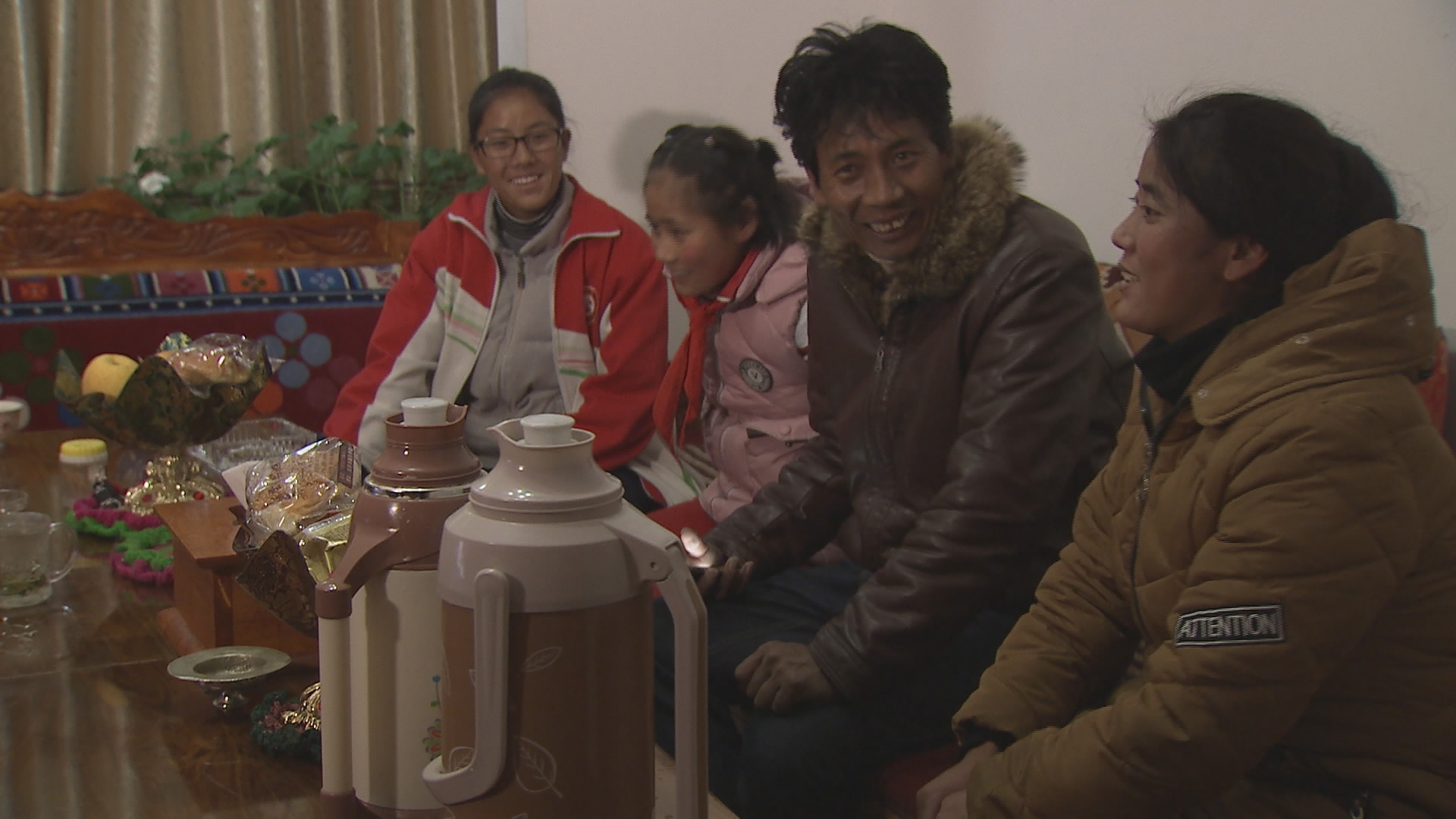
Politics
22:19, 23-Dec-2017
Tibet development: Lhasa fighting poverty through initiatives and development
By Yang Jinghao and Luo Caiwen

The 43-year-old Tsring Padrup is looking to acquire some computer skills to help him adapt to his new job. He was just elected as the deputy director of the residential neighborhood he lives in. One year ago, his family was relocated into the well-equipped modern community in Chengguan district of Lhasa from a remote village of the city, thanks to a nationwide poverty alleviation initiative.
"I dropped out of school at my early age. So the job is a challenge for me and I’ll ask my children to teach me some Mandarin and computer knowledge when they come back from school," the Tibetan man told CGTN.
For decades, Tsring’s family had relied on traditional farming to make a living, such as highland barley cultivation and yak herding. In the off-season, he would work as a tricycle driver in downtown Lhasa to support his family. He had never expected such a big change in his life, with a new house and new job provided.

The residential neighborhood located in suburban Lhasa accommodates more than 300 relocated families. More people from poverty-stricken areas are expected to move to this area in the coming years. / CGTN Photo
The residential neighborhood located in suburban Lhasa accommodates more than 300 relocated families. More people from poverty-stricken areas are expected to move to this area in the coming years. / CGTN Photo
"Our life is completely different here. For example, in the past, I had to take a motorcycle or tractor for hours to see a doctor; but now, the hospital is just around the corner. Also, it's a lot easier for children to go to school," said Tsring.
More than 300 needy families have benefited from targeted relocations such as this – a preferential policy nationwide for people living in poverty stricken areas. Apart from free housing, the farmers and herdsmen with labor force have also been provided with different employment opportunities – security guards or cleaners in the neighborhood, or workers in the city’s Zhizhao Industrial Park.
Established in 2013, the comprehensive industrial park integrates diversified industries, including modern farming, tourism and logistics.
Tsewang Tezin, a girl relocated from a village with an altitude of more than 4,500 meters, now works at the cow farm of the industrial park and can earn more than 3,000 yuan each month. She said the income has greatly improved the quality of her family’s life.

The cow farm in the Zhizhao Industrial Park, which is located in Chengguan district, Lhasa. Industrial development has become a vital way to fight poverty in China. / CGTN Photo
The cow farm in the Zhizhao Industrial Park, which is located in Chengguan district, Lhasa. Industrial development has become a vital way to fight poverty in China. / CGTN Photo
Among the diversified poverty-relief approaches, developing specialized industries has been widely considered the fundamental way out. The Zhizhao Industrial Park now serves as an impetus for the city’s economic development, and its new business model – which involves the government, agricultural cooperatives and farmers – means it’s perfectly set up to fight poverty.
Wu Jie, President of the Jingtu Agricultural Development Company which operates these industries in the park, said local farmers are benefiting from the industrial development in various ways.
“All the lands here are from local farmers. They can get a fixed sum of money for land transfers each year. Then they can work here and are paid more than 3,000 yuan each month. At year-end, they are entitled to their quota of the profit,” he said.
Chengguan has become one of the first districts or counties in Tibet to be lifted out of poverty. And its government is drawing an even bigger blueprint for further development. Liu Liang, chief of the district, told CGTN that as the central part of Lhasa – the destination for the world travelers – the district will further explore its tourism resources to help locals increase income, among other measures.

Tsring Padrup’s old residence in a remote village of Lhasa / CGTN Photo
Tsring Padrup’s old residence in a remote village of Lhasa / CGTN Photo
The changes are now inspiring the younger generations. Tsring’s eldest daughter says her goal is to go to university in Lhasa where she can learn both Mandarin and Tibetan, as she believes the future development of her hometown can be as good as the inland cities, or even better.

SITEMAP
Copyright © 2018 CGTN. Beijing ICP prepared NO.16065310-3
Copyright © 2018 CGTN. Beijing ICP prepared NO.16065310-3